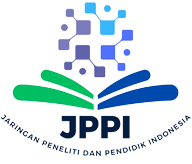Pendekatan STEM untuk Meningkatkan Keterampilan Berpikir Kritis Siswa pada Materi Fluida Statis
DOI:
https://doi.org/10.52434/jpif.v1i2.1483Keywords:
Fluida Statis, Keterampilan Berpikir Kritis, Pendekatan STEMAbstract
Penelitian ini bertujuan untuk mengetahui peningkatan keterampilan berpikir kritis siswa SMA melalui pendekatan STEM pada materi fluida statis. Penelitian ini dilakukan di salah satu SMA Negeri di Kabupaten Garut dengan jumlah sampel 40 siswa (18 siswa laki-laki dan 22 siswa perempuan). Jenis penelitian ini adalah pre-eksperimen dengan rancangan one shot pretest-posttest group. Instrumen penelitian berupa soal uraian keterampilan berpikir kritis siswa SMA pada materi fluida statis. Berdasarkan nilai N-Gain diperoleh hasil 0.62 yang termasuk dalam kategori sedang. Peningkatan tertinggi terdapat pada indikator memberi penjelasan sederhana dan peningkatan terendah terdapat pada indikator mengatur strategi dan taktik. Hasil penelitian menunjukkan bahwa pendekatan STEM dapat meningkatan keterampilan berpikir kritis siswa pada materi fluida statis. ÂReferences
Ab Kadir, W., Huda, W. N., Abdullah, N. S. Y., & Mustapha, I. R. (2021). The Effectiveness of Form Four STEM-Based Physics Interactive Laboratory (I-Lab) by Employing Isman Instructional Design Model. Turkish Online Journal of Educational Technology-TOJET, 20(2), 140-145.
Bulu, V. R., & Tanggur, F. (2021). The Effectiveness of STEM-Based PjBL on Student’s Critical Thinking Skills and Collaborative Attitude. Al-Jabar: Jurnal Pendidikan Matematika, 12(1), 219-228.
Creswell, J.W. (2014). Research Design: Quantitative, Qualitative, and Mixed Methods Approaches. United Stated of America: SAGE Publications.
Chanchaichaovivat, A., Panijpan, B., dan Ruenwongsa, P. (2009). Enhancing Conceptual Understanding and Critical Thinking with Experiential Learning: A Case Study with Biological Control. Asian Journal of Food and Argo-Industry. Special Issue, S424-S443.
Duran, M., dan Sendag, S. (2012). A Preliminary Investigation into Critical Thinking Skills of Urban High School Students: Role of an IT/STEM Program. Scientifif Research, 3(2), hlm. 241-250.
Dwyer, C. P., Hogan, M. J., & Stewart, I. (2014). An integrated critical thinking framework for the 21st century. Thinking skills and Creativity, 12, 43-52.
Ennis. (2011). The Nature of Critical Thinking: An Outline of Critical Thinking Dispositions and Abilities. [Online]. Diakses dari http://faculty.education.illinois.edu/rhennis/documents/TheNatureofCritical Thinking_51711_000.pdf
Fraenkel, J.R., Wallen, N.E., dan Hyun, H.H. (2012). How to Design and Evaluate Research in Education Eight Edition. New York: McGrow Hill Company.
Goldman, C. A., & Massey, W. F. (2001). The PhD factory: Training and employment of science and engineering doctorates in the United States. Anker
Hacioglu, Y., & Gulhan, F. (2021). The Effects of STEM Education on the Students’ Critical Thinking Skills and STEM Perceptions. Journal of Education in Science, Environment and Health, 7(2), 139-155.
Hake, R.R. (1999). Analyzing Change/Gain Score. American Educational Research Associations Division Measurement and Research Methodology. Diakses dari http://www.physics.indiana.edu/ ~sdi/AnalyzingChange-Gain.pdf
Harahap, L. J., Ristanto, R. H., & Komala, R. (2020). Evoking 21st-Century Skills: Developing instrument of critical thinking skills and mastery of ecosystem concepts. Tadris: Jurnal Keguruan dan Ilmu Tarbiyah, 5(1), 27-41.
Juca-Aulestia, M., Zúñiga-Tinizaray, F., Pozo-Vinueza, M., Malla-Alvarado, F., Cáceres-Mena, M., Almendariz-Pozo, P., & Román-Robalino, D. (2021). Instrumentation, Implementation and Tools in STEM-STEAM Education: A Systematic Literature Review. In World Conference on Information Systems and Technologies (pp. 183-194). Springer, Cham.
Kurniati, R. D., Andra, D., & Distrik, I. W. (2021). E-module development based on PBL integrated STEM assisted by social media to improve critical thinking skill: A preliminary study. In Journal of Physics: Conference Series (Vol. 1796, No. 1, p. 012077). IOP Publishing.
Kurniawan, T. T., & Utaminingsih, S. (2021, March). Analysis of 4C-Based HOTS Assessment Module on Critical Thinking Ability. Journal of Physics: Conference Series (Vol. 1823, No. 1, p. 012101). IOP Publishing.
Lang, D. (2000). Critical Thinking in Web Courses: An oxymoron? Syllabus, 14(2), 20- 24.
Lestari, I.F. (2019). Pendekatan Science, Technology, Engineering, and Mathematic (STEM) untuk Meningkatkan Kemampuan Pemecahan Masalah Fisika Siswa pada Konsep Tekanan Hidrostatis. Jurnal Pendidikan Universitas Garut, Vol. 13 (1), hlm. 103-109.
Minshew, L. M., Olsen, A. A., & McLaughlin, J. E. (2021). Cognitive Apprenticeship in STEM Graduate Education: A Qualitative Review of the Literature. AERA Open, 7, 23328584211052044.
Muhajir, S. N., Utari, S., & Suwarma, I. R. (2019). How to develop test for measure critical and creative thinking skills of the 21st century skills in POPBL?. In Journal of Physics: Conference Series (Vol. 1157, No. 3, p. 032051). IOP Publishing.
Supena, I., Darmuki, A., & Hariyadi, A. (2021). The Influence of 4C (Constructive, Critical, Creativity, Collaborative) Learning Model on Students' Learning Outcomes. International Journal of Instruction, 14(3), 873-892.
Ryoo, J., & Winkelmann, K. (2021). Innovative Learning Environments in STEM Higher Education: Opportunities, Challenges, and Looking Forward.
Wan Ab Kadir,W.N.H., Abdullah, N. S. Y., & Mustapha, I.R (2019). The Application Of The Fuzzy Delphi Technique On A Component Of Development Of Form Four STEM-Based Physics Interactive Laboratory (I-Lab). International Journal Of Scientific & Technology Research, 8(12), 2918-2912.

























